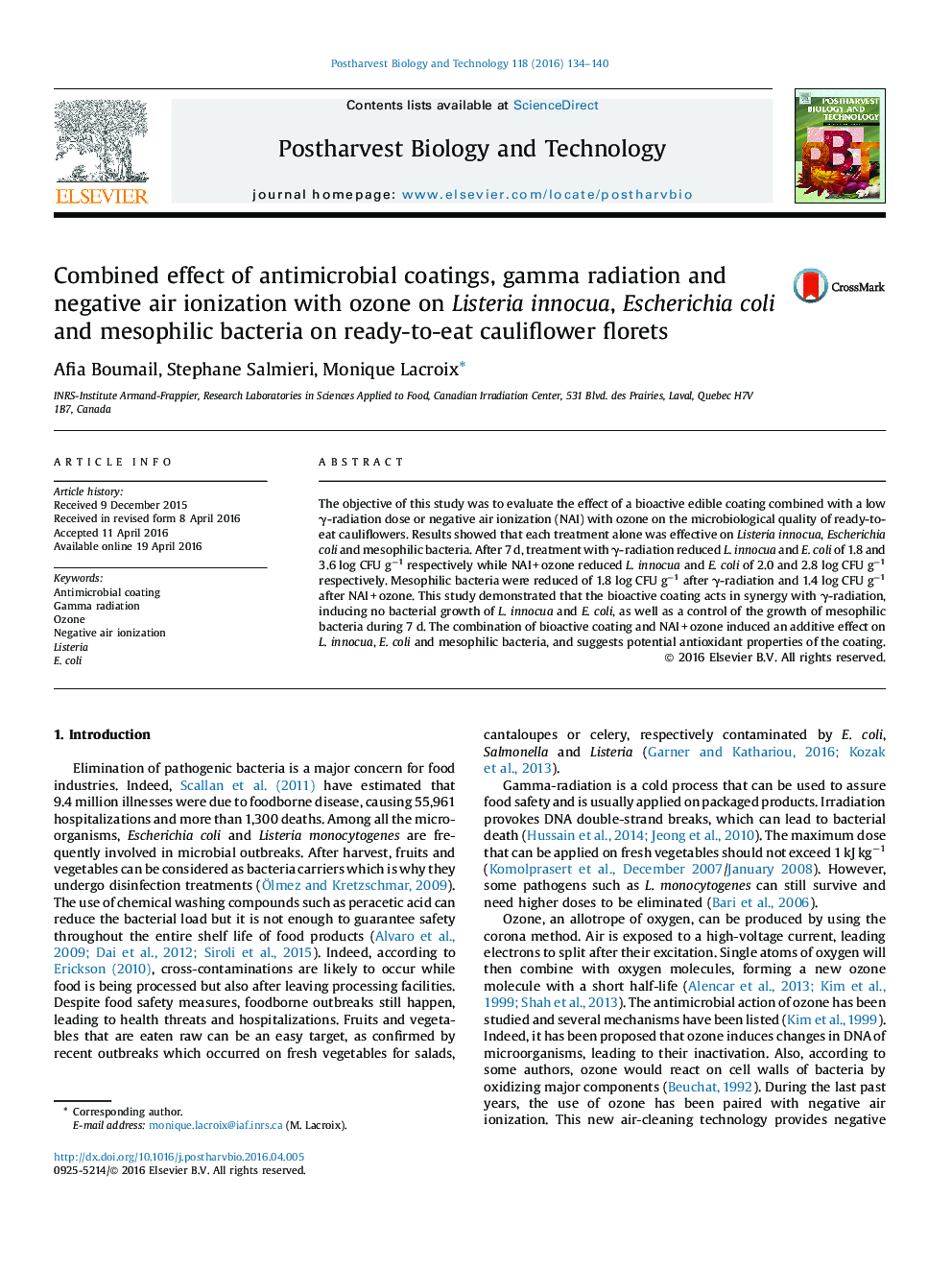| Article ID | Journal | Published Year | Pages | File Type |
|---|---|---|---|---|
| 4517800 | Postharvest Biology and Technology | 2016 | 7 Pages |
•The antimicrobial coating induced inhibition of the bacterial growth during storage.•Negative air ionization + ozone treatments can be used to reduce bacterial growth.•Coating combined with gamma radiation inhibited the growth of Listeria and E. coli.•An additive effect was observed between the antimicrobial coating and NAI/ozone.•A synergic effect was observed between the antimicrobial coating and gamma radiation.
The objective of this study was to evaluate the effect of a bioactive edible coating combined with a low γ-radiation dose or negative air ionization (NAI) with ozone on the microbiological quality of ready-to-eat cauliflowers. Results showed that each treatment alone was effective on Listeria innocua, Escherichia coli and mesophilic bacteria. After 7 d, treatment with γ-radiation reduced L. innocua and E. coli of 1.8 and 3.6 log CFU g−1 respectively while NAI + ozone reduced L. innocua and E. coli of 2.0 and 2.8 log CFU g−1 respectively. Mesophilic bacteria were reduced of 1.8 log CFU g−1 after γ-radiation and 1.4 log CFU g−1 after NAI + ozone. This study demonstrated that the bioactive coating acts in synergy with γ-radiation, inducing no bacterial growth of L. innocua and E. coli, as well as a control of the growth of mesophilic bacteria during 7 d. The combination of bioactive coating and NAI + ozone induced an additive effect on L. innocua, E. coli and mesophilic bacteria, and suggests potential antioxidant properties of the coating.
